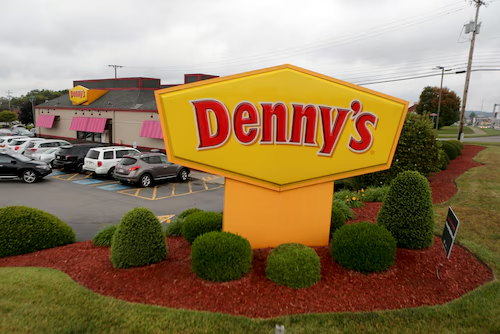Denny’s, a staple of the American diner experience, has announced plans to close nearly 150 underperforming locations by the end of 2025.
This decision follows an ongoing struggle to adapt to post-pandemic consumer behavior, rising operational costs, and shifting dining preferences. More recently, the company’s CFO hinted at an even greater reduction, with up to 90 additional closures on the table.
For investors and industry watchers, these moves highlight broader economic trends affecting the casual dining sector.
The Driving Forces Behind Denny’s Closures
Several factors have contributed to Denny’s downsizing initiative:
- Inflationary Pressures: Rising food and labor costs have squeezed profit margins, making it difficult for franchisees to maintain profitability at underperforming locations.
- Real Estate Challenges: Many of Denny’s older locations require costly renovations, making closures a more financially sound decision than reinvestment.
- Changing Consumer Habits: Post-pandemic, customers have shifted toward fast-casual and delivery-focused dining, diminishing the foot traffic for traditional sit-down diners.
- Supply Chain Issues: The recent bird flu outbreak has significantly impacted egg prices, a key ingredient in Denny’s menu offerings.
Broader Implications for Casual Dining Chains
Denny’s is not alone in its struggles. Other well-known casual dining brands, including Red Lobster and TGI Fridays, have also been forced to shutter locations due to similar economic pressures. The restaurant industry is undergoing a fundamental shift as consumers gravitate toward convenience-driven dining experiences, such as food delivery services and quick-service restaurant (QSR) models.
For investors, this trend raises key questions:
- Is traditional casual dining still a viable business model? Brands that fail to evolve their offerings risk falling behind as the industry moves toward digital and drive-thru innovation.
- Will franchise-led restructuring yield long-term gains? By focusing on a smaller, more profitable footprint, Denny’s aims to improve franchisee cash flow and reinvest in remodeling efforts to modernize its brand appeal.
- Are there opportunities in QSR and hybrid models? Companies that blend traditional sit-down service with tech-enabled ordering and delivery solutions may be better positioned for growth.
Looking Ahead: What’s Next for Denny’s?
Despite these closures, Denny’s leadership remains optimistic about its long-term strategy. The company continues to invest in brand revitalization efforts, including menu innovation, digital transformation, and franchise support.
However, its ability to navigate economic headwinds will be critical in determining whether it can stabilize operations and sustain investor confidence.
For financial analysts and stakeholders, Denny’s restructuring signals both risk and opportunity.
Investors should closely monitor consumer spending patterns, the company’s revenue trajectory, and broader industry shifts to assess whether Denny’s can successfully pivot in an evolving dining landscape.
Also Read

